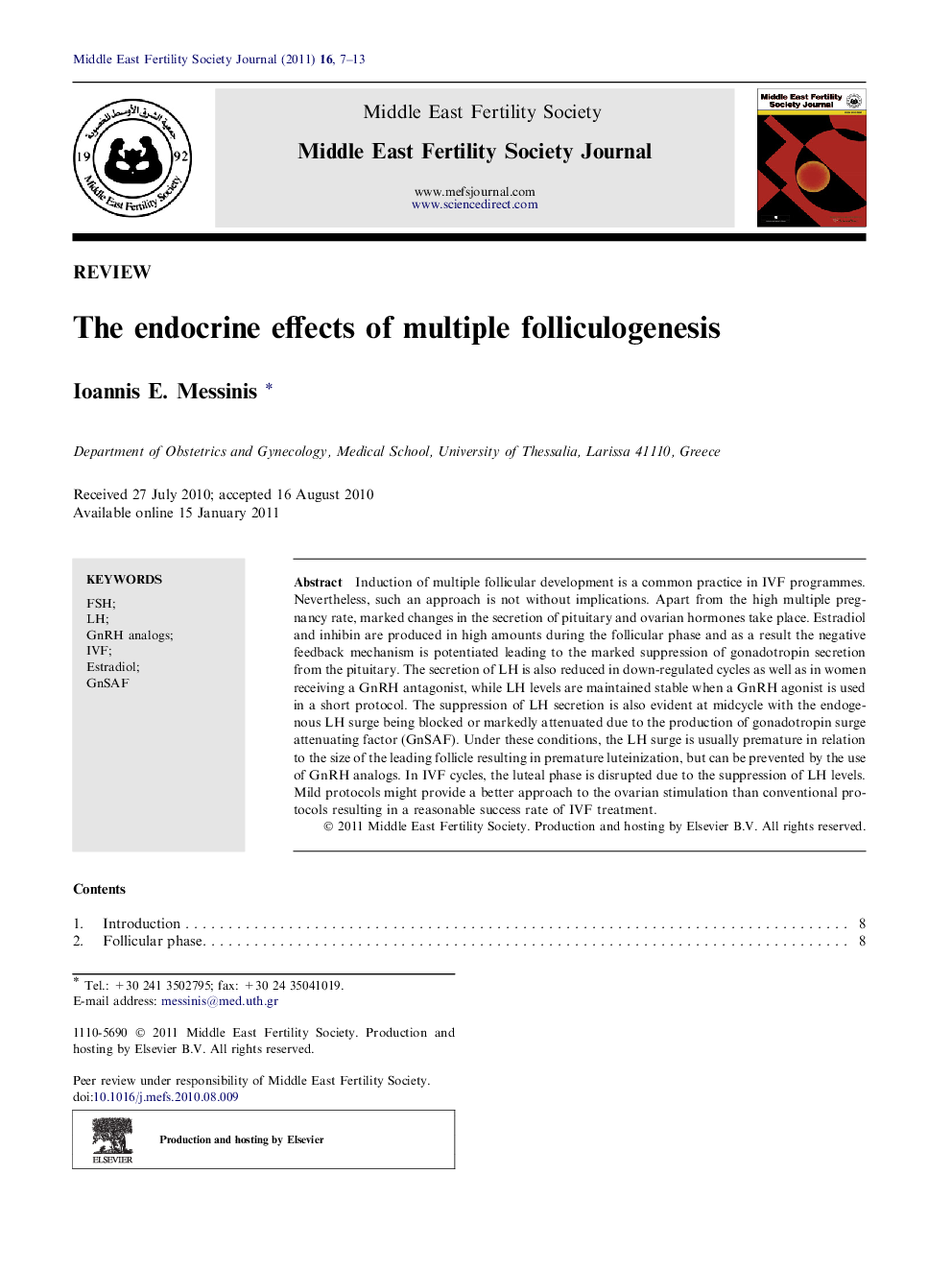| Article ID | Journal | Published Year | Pages | File Type |
|---|---|---|---|---|
| 3966449 | Middle East Fertility Society Journal | 2011 | 7 Pages |
Induction of multiple follicular development is a common practice in IVF programmes. Nevertheless, such an approach is not without implications. Apart from the high multiple pregnancy rate, marked changes in the secretion of pituitary and ovarian hormones take place. Estradiol and inhibin are produced in high amounts during the follicular phase and as a result the negative feedback mechanism is potentiated leading to the marked suppression of gonadotropin secretion from the pituitary. The secretion of LH is also reduced in down-regulated cycles as well as in women receiving a GnRH antagonist, while LH levels are maintained stable when a GnRH agonist is used in a short protocol. The suppression of LH secretion is also evident at midcycle with the endogenous LH surge being blocked or markedly attenuated due to the production of gonadotropin surge attenuating factor (GnSAF). Under these conditions, the LH surge is usually premature in relation to the size of the leading follicle resulting in premature luteinization, but can be prevented by the use of GnRH analogs. In IVF cycles, the luteal phase is disrupted due to the suppression of LH levels. Mild protocols might provide a better approach to the ovarian stimulation than conventional protocols resulting in a reasonable success rate of IVF treatment.
